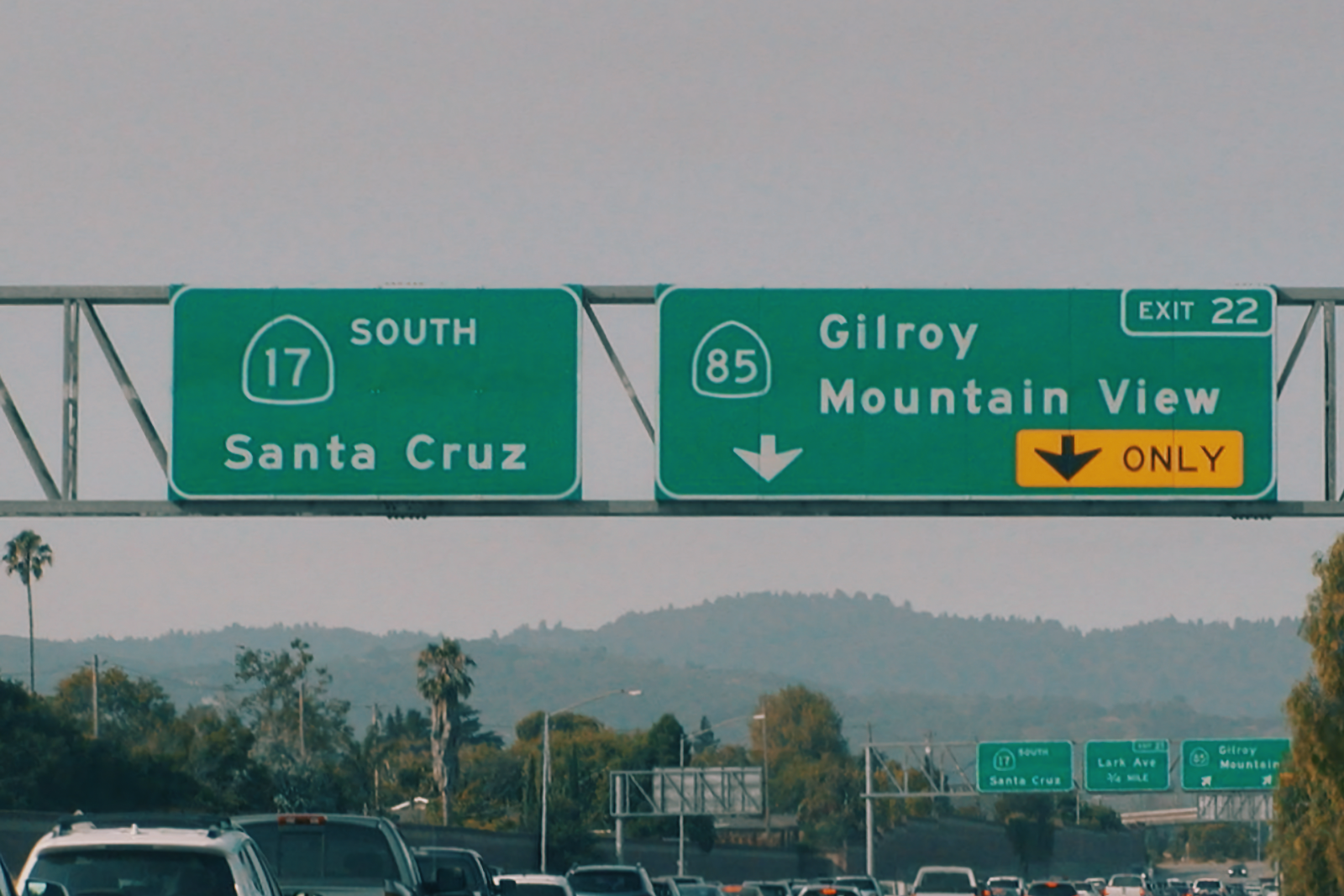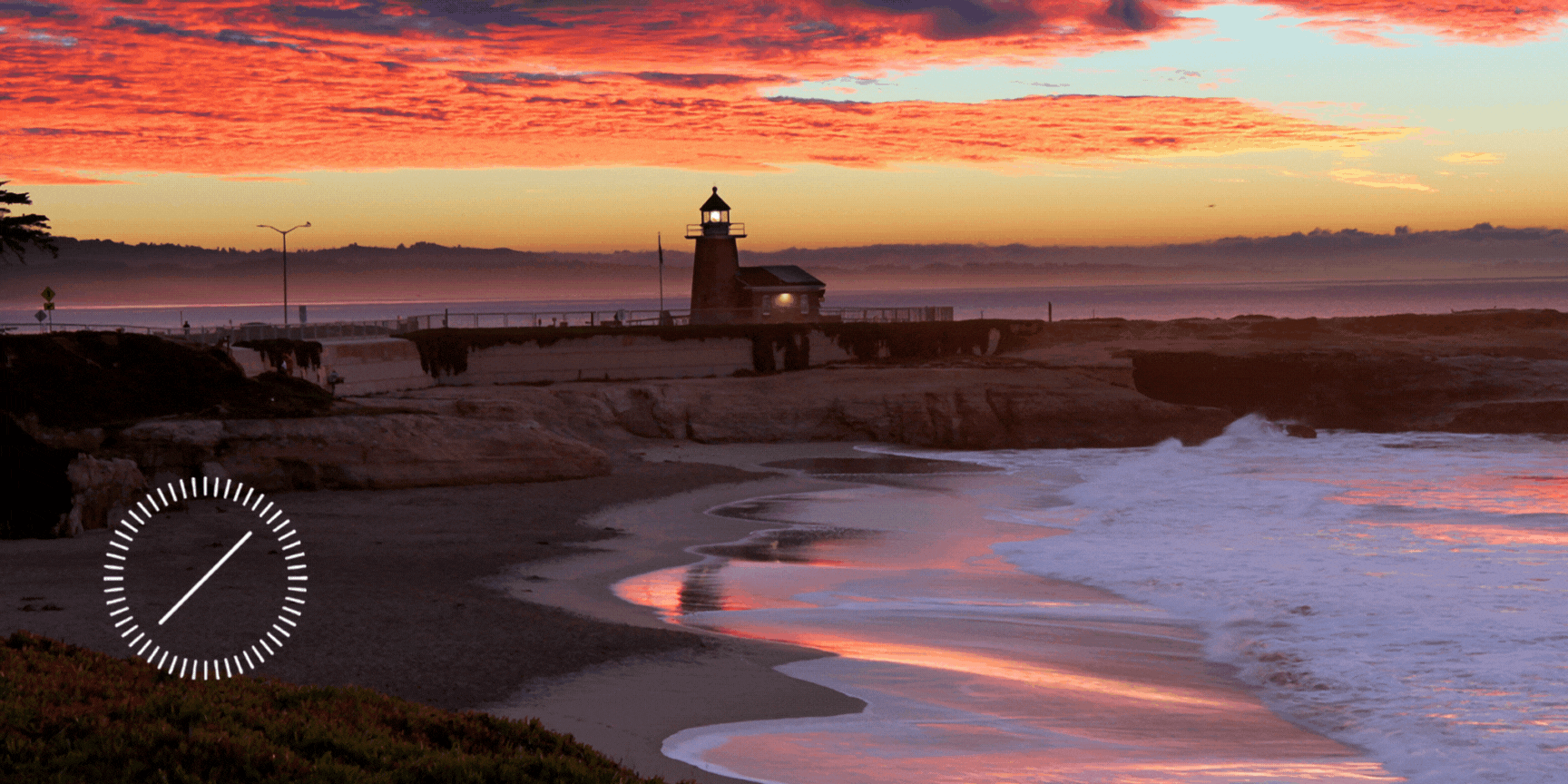Like a lot of people, you probably find that there’s a lot of things you love about living the in the Bay Area. But maybe you’re ready to take a bit of a step back, and relocate somewhere that’s close by – so when you need to get to San Francisco, the Peninsula, or San Jose you can get there in short order. Somewhere maybe a bit more relaxed, with a little less hustle and a little more ahhh. Yet relocating can be a daunting process, particularly when it entails moving from a bustling metropolitan area like the Bay Area to a more serene location like Santa Cruz. If you’re contemplating such a move, this comprehensive guide on moving from the Bay Area to Santa Cruz aims to provide valuable insights and practical tips to make your transition smoother and more informed.
The Dollars and Sense of Moving to Santa Cruz from the Bay Area
Bay Area homeowners who are looking to make a move from the Bay Area to Santa Cruz will find that the easy part of the move will be selling their Bay Area home. Demand for homes in the Bay Area is generally excellent due to decades of low construction of housing. Although the real estate market has its ups and downs, there will always be a buyer for your Bay Area home – the only question is just how much they’ll pay for it.
Odds are though that you’ll probably be selling your Bay Area home for a lot more than you paid for it. For homeowners looking to sell their Bay Area property and move to Santa Cruz, understanding the economic implications, particularly around capital gains taxes and the benefits of Proposition 19, is crucial.
Buy your Home in Santa Cruz before you Sell in the Bay Area
Financial Considerations for Your Move
Before leaving the Bay area – whether you are moving to Santa Cruz, or anywhere else, it’s important to take into account the financial considerations of any such move. Some of the things you’ll want to think about are:
Equity and Profit: Bay Area homes have seen significant appreciation. Selling your home here could leave you with substantial equity to invest in your new Santa Cruz property, particularly if you are a long-term Bay Area homeowner. By selling your home in the Bay Area, you may be looking forward to enjoying a significant liquidity event.
Market Differences: The real estate market in Santa Cruz, while still robust, often has a different pricing structure than the Bay Area. Many parts of the Bay Area are significantly more expensive than Santa Cruz, so you may be able to trade up into a larger home and/or a larger lot and still pay less than you would for a comparable home in whatever Bay Area town you live in now.
Tax Implications: Capital gains tax can take a substantial bite out of your profit. It’s essential to calculate this beforehand and understand how your sale price impacts your tax obligations. Many people do not understand the tax implications for the sale of their primary residence, and are caught unawares by this long after they’ve set the whole process in motion. You want to be clear about this before you make firm plans to sell your current home.
Prop 19 Benefits: If eligible, leveraging Prop 19 can result in substantial long-term property tax savings in Santa Cruz, particularly if your Bay Area home’s tax base is significantly lower than what the new property would be assessed at. This allows you to continue to enjoy low(er) property taxes after moving to Santa Cruz, making it more affordable especially for those who are, or will soon be, on a fixed income.
Retirement Planning: For retirees, this move could be financially strategic. The equity from a high-value Bay Area home can fund a comfortable lifestyle in Santa Cruz, with the added advantage of lower property taxes courtesy of Prop 19. You may have enough money left over, even after buying a home in Santa Cruz, to construct an ADU or further fund your retirement account.
In short, selling in the Bay Area and buying in Santa Cruz can be economically advantageous, particularly with the tax benefits offered by Proposition 19. However, it’s crucial to navigate the capital gains implications carefully and consult with a real estate professional and a tax advisor to make the most informed decision for your unique situation. That’s why you should read on for a discussion of capital gains taxes and Prop 19.
Capital Gains Taxes: A Brief Overview
When you sell your Bay Area home for more than you paid for it, you’re potentially facing capital gains taxes. Simply put, capital gains tax is levied on the profit made from the sale of your property. As of now, if you’ve lived in your home for at least two of the five years before selling, you can exclude up to $250,000 of this gain from your income if you’re single, or $500,000 if there are two owner-occupants (but check with your tax professional, as I am not qualified to give tax advice).
However, the Bay Area’s soaring property values often mean that gains can exceed these thresholds. For gains above these amounts, the tax rate can vary based on your overall income, ranging from 0% to about 33% for long-term capital gains.

Moving from the Bay Area to Santa Cruz
Proposition 19: Keeping Property Taxes in Check
Proposition 19, passed in California in 2020, offers significant tax relief for homeowners who are over 55, disabled, or victims of natural disasters. It allows these individuals to transfer the tax base of their original home to a replacement home anywhere in California – a boon for those moving from the Bay Area to Santa Cruz.
This means, under Prop 19, if you’re eligible, you can buy a new home in Santa Cruz and potentially keep your lower property tax rate from your Bay Area home. If the new home is more expensive, the tax base increases but only by the difference in the assessed value between the old and new homes, after the first $1,000,000 in assessed value differential.
For example, let’s say that you paid $500,000 for your home in the Bay Area. At the time you purchased it, the assessed value would have been the purchase price, and under California Prop 13, your assessed value can only go up 2% per year. Now, many years later, your assessed value may have risen to, say, $800,000.
When you buy your next home in Santa Cruz, the value of that home will be re-assessed to fair market value at the time your buy it (which will usually be the price you pay for it). Under Prop 19, you can pay anything you want for your next home, but you will be shielded from a property tax increase only on the first $1,000,000 in differential.
In this example, if you sold a home in the Bay Area with an $800,000 assessed value, you could buy a home up to $1,800,000 in Santa Cruz and your property tax would stay exactly the same. But in this scenario, if you bought a home for $2,000,000 your new tax assessed value on that home would be $1,000,000 and your property tax would then be 25% higher.
To calculate this, the tax assessor would take your current assessment ($800K), add $1,000,000 as the exclusion, and subtract that from the $2,000,000 purchase price ($800,000 + $1,000,000 = $1,800,000) leaving a $200,000 which would be added on to your current assessment to arrive at a new assessed value of $1,000,000.
Watch my Home Sale Tax Seminar
Anyone who is thinking of selling a home in the Bay Area would do well to watch the Home Sale Tax Webinar I did with Chris Grindy of Grindy Tax Services in San Jose. Everyone who watches it has found it to be really informative and valuable, and will answer many of the questions you have about the various tax issues surrounding the sale of your home in the Bay Area.
Insurance Considerations for Homes in Santa Cruz
The Santa Cruz region enjoys amazing natural splendor: the coastline, forests, and mountains are just breathtaking, and it’s chief among the reasons that people choose to live in the area. But all this natural splendor comes at a cost: the risks of wildfire, floods, and landslides are significant in most parts of the region. Many people are surprised to see just how high insurance costs are in many of the most beautiful parts of Santa Cruz County.
Before you get your heart set on any particular part of the county, or especially on any particular home, you would do well to understand the cost of insurance (and possibly ways to reduce that cost). I did a webinar with Michelle Lin of Red Wave Insurance Services in San Jose which goes over many of the insurance issues homeowners in California area facing today.
Living in the Bay Area vs. Living in Santa Cruz
If you’re thinking about making a move from the Bay Area to Santa Cruz, you probably have a lot of questions about what it would be like to actually live there. Fortunately, Santa Cruz is close by, and you’ve probably visited at least several times in the past. But if you’re planning to make a trip down to check it out soon, you may enjoy this piece I wrote about the perfect 3-day weekend getaway in Santa Cruz.
Living in the Bay Area versus Santa Cruz presents some notable differences, primarily in lifestyle, cost of living, climate, and community vibe.
Lifestyle and Environment
- The Bay Area, encompassing cities like San Francisco, San Jose, and Oakland, is known for its bustling urban environment, tech-centric culture due to Silicon Valley, and a diverse range of cultural and social activities.
- Santa Cruz, on the other hand, offers a more laid-back, beach-town atmosphere. It’s known for its surf culture, natural beauty, and a strong sense of community focused on outdoor activities.
Cost of Living
- Generally, the cost of living in the Bay Area is among the highest in the nation, driven primarily by housing costs. This is especially true in San Francisco and parts of Silicon Valley.
- Santa Cruz, while still expensive relative to the national average, often has slightly lower housing costs compared to the core Bay Area, but it’s still considered pricey.
Climate
- The Bay Area has a wide range of microclimates. San Francisco is known for its foggy and cooler weather, while areas further inland like San Jose experience warmer and sunnier conditions.
- Santa Cruz has a moderate and more consistent climate, with generally warmer and sunnier weather than the coastal parts of the Bay Area, thanks to its sheltered location on the Monterey Bay. The further you get from the coast, the warmer it will be – summers in the San Lorenzo Valley, Scotts Valley, and the Aptos Hills can get pretty warm, but down by the beach you’ll find it to be fairly temperate all year long.
Economic and Job Opportunities
- The Bay Area is a global hub for technology, finance, and innovation, offering a wealth of job opportunities, particularly in tech and startups.
- Santa Cruz has a smaller, more localized economy with fewer large corporations, leaning more towards tourism, education (with UC Santa Cruz), and local businesses.
Commute and Transportation
- The Bay Area offers extensive public transportation options like BART, Caltrain, and various bus systems, but it also suffers from significant traffic congestion.
- In Santa Cruz, public transportation options are more limited, and many residents rely on cars. The commute to the Bay Area from Santa Cruz can be lengthy, especially during peak hours.
Community and Culture
- The Bay Area is known for its diverse and multicultural communities, progressive attitudes, and a strong focus on innovation and entrepreneurship.
- Santa Cruz has a reputation for its liberal and environmentally conscious community, a strong local arts scene, and a more relaxed pace of life.
Each area has its unique charm and set of challenges, so the choice largely depends on personal preferences, lifestyle, and professional needs.
Understanding Santa Cruz
Perhaps the first thing to know about Santa Cruz is that there’s the City of Santa Cruz, and Santa Cruz County. This guide encompasses all of Santa Cruz County, as only about 25% of the county population lives in the city. There are only three other cities in Santa Cruz County: Scotts Valley, Capitola and Watsonville – everything else is unincorporated Santa Cruz County. The county of Santa Cruz is nestled on the Pacific coastline, famous for its stunning natural beauty (with miles of beaches and sprawling redwood forests, friendly locals, and a rich blend of cultures. The area offers a more laid-back, outdoorsy lifestyle compared to the hustle and bustle of the Bay Area. However, it’s crucial to understand the area’s nuances before you make the big move.
The Lifestyle
Santa Cruz presents a harmonious blend of natural beauty and urban comforts. The city itself is home to the county’s largest employer, the University of California, Santa Cruz, which contributes greatly to its youthful and vibrant atmosphere. Santa Cruz is also renowned for its strong commitment to environmental conservation, healthy living, and community engagement.
Santa Cruz is also known as “surf city” – and surfing is a strong component of the local culture. If you’re interested in surfing and you want to live in Northern California, Santa Cruz is definitely the place for you! You might also be interested to check out my guide to the best surf spots in Santa Cruz.
The People
Santa Cruz’s population is diverse, comprising students, retirees, young families, and singles. As a result, the city boasts a unique balance between its community members, making it a dynamic and exciting place to live. The locals are known for their friendly and approachable demeanor, often greeting strangers with a smile and a friendly “hi.”
The Climate
Santa Cruz enjoys a temperate climate, with temperatures hovering around the 60s and 70s year-round. This climate makes the county an ideal place for outdoor activities and water sports, particularly surfing, hiking, and walking. The weather alone is one reason why so many people are interested in moving from the Bay Area to Santa Cruz.
Housing in Santa Cruz
Finding the right home is a crucial aspect of moving. Santa Cruz offers a variety of housing options, from beachfront properties to homes nestled in the majestic redwood groves. However, housing costs in Santa Cruz are famously expensive, with home affordability the almost the worst in California and the United States as a whole. This is due in large part to “slow growth” policies enacted in the 1970s which greatly reduced development in the county.
Cost of Living
Despite its laid-back charm, Santa Cruz is one of the most expensive places to live in the U.S. The cost of housing is particularly high, with the average rent for a two-bedroom apartment estimated at around $2,742. The price can increase significantly if you wish to live on the West Side near downtown Santa Cruz or the anywhere near the ocean like in Pleasure Point, Opal Cliffs, Capitola, Seacliff, Seascape, Rio del Mar, or La Selva Beach.
Housing Market
While the cost of living can be daunting, it’s important to remember that the housing market fluctuates. Various factors, including the economy, interest rates, and housing demand, can influence home prices. Therefore, it’s essential to monitor the market closely and seek advice from a great real estate professional. But if you’re selling a home in the Bay Area, the same factors driving demand (and prices) in the Bay Area would be at work in Santa Cruz as well – although trends in Santa. Cruz tend to lag those in the Bay Area by about six months.
Affordable Housing
If affordability is a concern, consider looking at properties in the Santa Cruz mountains or the surrounding towns. Areas like Felton, Ben Lomond, and Boulder Creek offer more affordable options and are only a short commute away from Santa Cruz. You could also explore the city of Watsonville at the south end of the county, which enjoys beautiful weather and is by most accounts a tremendous place to call home.
Santa Cruz County Relocation Guide
If you are seriously consider moving to Santa Cruz County, I strongly recommend that you read my Santa Cruz County Relocation Guide. It was one of my “pandemic projects” – I spent considerable time putting this guide together, and I do believe it is the most exhaustive and useful relocation guides available anywhere. It provides a level of detail that is greater than any other single resource on the Internet, and is well worth checking out if you are serious about moving to Santa Cruz from the Bay Area.
Job Market in Santa Cruz
Before moving, it’s essential to understand the job market in your new town. While Santa Cruz may not be a major industrial hub, it offers a variety of employment opportunities, particularly in sectors such as education, health care, aviation, high-tech, and retail. Of course, most people who make enough money to buy a home in Santa Cruz don’t earn their money within the county – Silicon Valley and Bay Area incomes are what drives prices in Santa Cruz.
Local Employment
The largest employers in Santa Cruz include the University of California, Santa Cruz, and Dominican Hospital. The area also hosts numerous non-profit organizations, contributing to a robust social services sector. However, even the largest employers in Santa Cruz don’t pay what competitive employers in the Bay Area would typically offer, so few people are moving from the Bay Area to Santa Cruz to make more money. Most people who do make the move will seek to either retire, or keep their old jobs and work remotely in Santa Cruz, with perhaps occasion forays to the Bay Area for work as may be required.
Commuting for Work
Many Santa Cruz residents commute to Silicon Valley cities for work, particularly Cupertino, Mountain View, and San Jose. While this commute can be challenging due to the winding Highway 17, it’s a common practice for locals seeking higher-wage jobs in the tech industry. However, some of Silicon Valley’s larger employers such as Apple and Google do have private buses which leave from Scotts Valley to shuttle employees to work at their respective Silicon Valley campuses.
Education in Santa Cruz
Santa Cruz offers a range of educational opportunities, from public and private K-12 schools to higher education institutions. The University of California, Santa Cruz, is a significant presence in the city, boasting a vibrant campus and a wide array of academic programs. Cabrillo College is a well-regarded Junior College with its main campus in Aptos and a satellite campus in Watsonville.
Community and Social Life
Santa Cruz is known for its strong sense of community and active social life. The city hosts numerous festivals, community events, and outdoor activities throughout the year. From the bustling farmers’ markets (there are a variety of them sprinkled throughout the county) to the iconic Santa Cruz Beach Boardwalk, there’s always something happening in Santa Cruz.
Outdoor Activities and Recreation
Santa Cruz is a paradise for outdoor enthusiasts. The city boasts beautiful beaches, scenic hiking trails, world-class golf courses, and an array of water sports activities. Whether you enjoy surfing, biking, hiking, or simply relaxing on the beach, Santa Cruz has something for everyone.
Local Traditions
Santa Cruz locals take pride in their unique traditions, from the annual First Rain run at the University of California, Santa Cruz, the wild Halloween party in downtown Santa Cruz, to the DIY Last Night Parade on New Year’s Eve. These traditions contribute to the city’s charm and sense of community.
Food and Dining
Santa Cruz is home to a thriving food scene, with an emphasis on organic, locally sourced ingredients. The region boasts numerous farm-to-table restaurants, wineries, and craft breweries, making it a food lover’s paradise.
Arts, Culture and Music
Santa Cruz is a hub for art and culture, hosting numerous galleries, music venues, and theater companies. The city’s artistic scene is further enriched by its diverse population and the presence of the university.
Safety and Crime
Like any city, Santa Cruz has areas with higher crime rates. However, the city is generally considered safe, and the local police department works diligently to maintain public safety. It’s always a good idea to research neighborhoods and speak with locals before deciding where to live.
Health and Wellness
Santa Cruz residents place a high value on health and wellness. The city offers numerous fitness centers, yoga and meditation studios, and health food stores. Santa Cruz’s outdoor lifestyle also contributes to its residents’ overall well-being.
Preparing for the Move
Moving to a new city requires careful planning and preparation. Start by researching housing and employment options, familiarizing yourself with the local culture and lifestyle, and preparing for any necessary changes in your budget or lifestyle.
In conclusion, moving from the Bay Area to Santa Cruz is a significant decision that can offer a refreshing change of pace. By understanding the city’s lifestyle, cost of living, and community, you can make an informed decision and ensure a smooth transition to your new home.
Santa Cruz Beach Homes for Sale
2
3
4
5
6
7
8
9
10
11
12
13
14
15
16
17
18
19
20
21
22
23
24
25




